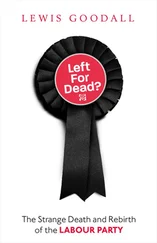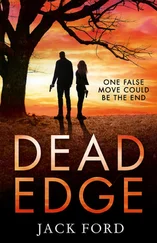Of course, Blair and Brown said the big tent couldn’t be constructed on a foundation of presentational changes alone; they believed deep policy shifts would be necessary as well. In the same way that the hunt for new voters and appeal is sometimes today considered a unique and grubby affliction of the New Labour years, so likewise the abandonment of certain policies and adoption of others is considered to be a distinct piece of New Labour treachery. Rather, it makes more sense to think of New Labour as the party’s latest attempt to respond to the changing material world around it, in a way that Labour hadn’t done in a comprehensive fashion for a very long time, probably since the revisionist Anthony Crosland attempted to update the Attlee settlement for the 1960s in his seminal work, The Future of Socialism . Blair’s and Brown’s thinking, nursed through the 1980s and ’90s, resulted in the so-called ‘Third Way’, in which the dynamism of the free market was combined with traditional social democratic goals of social justice and fairness. ¶As Blair was himself to say in 1999: ‘It was important for me to try and explain to people what the nature of my political project was about, this idea you could get beyond left and right but have a pro-business, pro-enterprise but also pro-fairness party.’ Decades after it had fallen out of favour, Blair was to reanimate that sentiment to me, saying that the Third Way and New Labour are just rhetorical vehicles ‘to describe an attitude, a way of looking at politics, the label is insignificant. What’s significant is the idea that social democracy has to keep renewing its policy applications and principles.’
This didn’t come out of a vacuum and it was a theme Blair spoke about often, throughout his leadership and after. When I asked him why he thought New Labour was successful he returned to the idea: ‘I think the reason is that we broke this stranglehold that elements of the progressive left had over associating policies which were appropriate at one time with principles for all time. It’s not complicated but it is essential; if you don’t break that stranglehold you have the world changing but you are in the same place over policy.’ In other words, he challenged the view that Labour policy had to be constant, that it would always look the same, and that to deviate from it was heresy, that there was only one road to socialism.
Blair won that argument for only a short time, and perhaps he never could win it in the end, because for most of his party the only road to socialism still runs to and from 1945 and hasn’t changed much since.
Clement Attlee’s 1945–51 government remains the party’s most important administration, one of the three most significant governments of the twentieth century. Its achievements are ones of which the party can be justly proud. Its ability to stir hearts in members of the party is unparalleled, despite the fact that no one even elected to that Parliament remains alive, much less anyone who held ministerial office. In the summer of 2015, I made a film about the seventieth anniversary of that government’s coming to power. As part of that I interviewed Margaret Beckett. She described an occasion when, in 1994, not long after John Smith’s death, she attended the fiftieth anniversary of D-Day in Normandy, as leader of the opposition:
‘We had a ceremony at the cemetery at Bayeux. The Queen was there, President Clinton, the Prime Minister and so on and so on. After the ceremony, the people broke and there was an opportunity for people to mix informally. And I was mobbed … by veterans and their families. I remember looking around and there were lots of people around the Prime Minister of course but I was mobbed. And it’s not just me who thinks that I was, because the Defence Secretary [Malcolm Rifkind] was there and said to everyone a few days later, did Margaret tell you, that she was mobbed by the D-Day veterans? And I thought … that was for Attlee’s government.’ As she told the story, she became quite overcome with tears.
It’s hard to compete with that, and every government before and since hasn’t. It is the only Labour government of the half-dozen or so there have been that has emerged with its reputation intact. Perhaps because of this and because of the strength of its achievement, it has acted as a sort of eternal litmus test against which each and every government since is judged within the Labour movement. It has become Labour lore. **
But just as subsequent Labour governments and prime ministers struggle to compete with its emotional pull, so they struggled to compete with Attlee’s greatest gift: the moment in which he lived, a moment primed for socialism. The total-war strategy articulated by Churchill entailed doing all the things that the Conservatives under Chamberlain and Baldwin had told the country were not possible: nationalising swathes of industry, huge government intervention in every sphere of existence, taking profound stakes in not only the economy but the day-to-day affairs of life. It controlled what you ate, what you did, whether or not your children lived with you, how much you paid for consumer goods, where you worked, whether or not you fought in the war, whether you lived or died. Public expenditure as a proportion of overall national spending and income skyrocketed. ††As a result, the ideological superstructure of the country changed. It was a unique moment and one that couldn’t last.
The new consensus Attlee and his ministers bequeathed held for the next thirty years or so, with both Labour and Conservative governments managing Attlee’s inheritance. But by the late 1970s Labour (and Conservative) governments had found it increasingly difficult to manage that settlement, which was by then decaying. As Britain struggled economically and the rest of the world fell into economic malaise, the traditional Keynesian methods of reflating the economy through public spending were in trouble across the globe. Jim Callaghan, who endured a pretty unsuccessful stint as chancellor and was now prime minister, sounded its death knell. He told the Labour Party conference in 1976: ‘We used to think that you could spend your way out of a recession and increase employment by cutting taxes and boosting government spending. I tell you in all candour that that option no longer exists, and in so far as it ever did exist, it only worked on each occasion since the war by injecting a bigger dose of inflation into the economy, followed by a higher level of unemployment as the next step.’
The cosy Keynesian postwar balloon was slowly leaking air. As it did so, the social ideas that underpinned it were also dissolving. As we’ve seen, the party’s grip on the working class was never entirely firm but by the 1970s it appeared almost loose. One of the central problems was the idea of greater public spending and, in a portent of things to come, a dissatisfaction with newer streams of more liberal leftist thought focusing on minorities and individual rights. As Denis Healey was to relay to his cabinet colleagues in 1975:
At the Labour clubs, you’ll find there’s an awful lot of support for this policy of cutting public expenditure. They will tell you all about Paddy Murphy up the street who’s got eighteen children, has not worked for years, lives on unemployment benefit, has a colour television and goes to Majorca for his holidays.4
In other words, as the years of postwar plenty gave way to a harsher economic climate, so the social solidarity that had paved the road to 1945 diminished. At the same time, globalisation, membership of the European Economic Community and increasing integration of global markets continued to lessen the power of social democratic governments to enact the policies that they might like: the idea that socialism or social democracy in one country was possible seemed less and less likely. Globalisation, the end of dollar convertibility and the development of a truly international capital market had disrupted the cosy world of 1940s Britain, where socialist or social democratic governments could pursue their dreams of a new Jerusalem without much regard to the rest of the world. The experience of the 1968 devaluation crisis under Wilson and the 1977 IMF crisis under Callaghan was searing to the Labour movement, but also illustrated how powerful international capital flows and financiers had become and how weak national governments now paled when set against them. Blair showed himself alive to these forces early in his leadership. In a university lecture in 1995 he said:
Читать дальше












